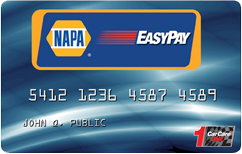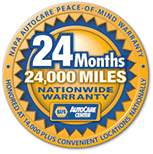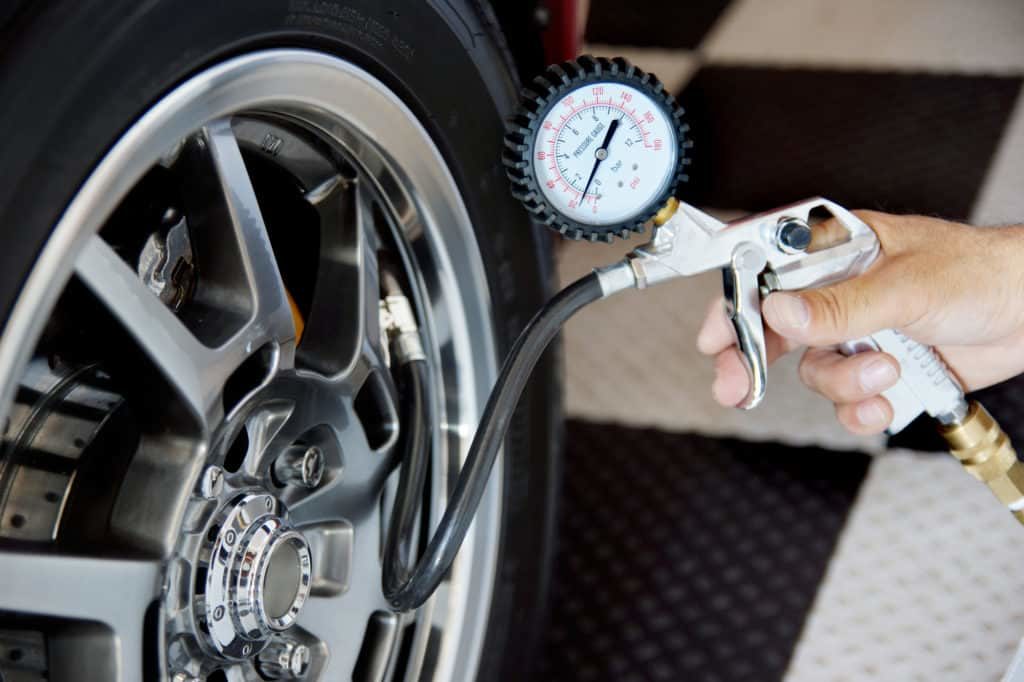
Tires are one of the most important, and often overlooked, parts of your automobile. When you consider that the traction and grip your tires provide are largely responsible for the controlled acceleration, steering and braking of your vehicle – which weighs thousands of pounds and which hurtles down the roads with incredible force – it becomes easier to understand why tires play such a vital role. This control of motion ultimately comes down to the four small points, each measuring only a couple of square inches, where your tires meet the road (“contact patches”).
In addition to offering grip while driving, tires also play a big role in the efficiency of your vehicle (MPG) and they help to provide dampening over rough surfaces. It is therefore very important to make sure that your tires are performing at their best, and continue to do so over time, so that you can safely and efficiently reach your destination. In this article we will be reviewing two of the easiest and best ways to keep your tires in good condition to always offer you the best performance possible and keep you safe.
PERFORMANCE UNDER PRESSURE
There are a staggering number of different tire types, manufactures, specs and sizes. One thing they all have in common is that there are ideal ranges of pressures to which they should be respectively filled to in order to optimize their performance, safety and minimize wear. Keeping your tires in this target pressure range is so important that the government created a law that vehicles sold in the US after 2007 must have a Tire Pressure Monitoring System (TPMS) that alerts drivers to changes in tire pressure. On most cars, the recommended tire pressure is also listed on a sticker inside the driver’s door jamb and can also be found in your Owner’s Manual.
If you’re scratching your head as to why your gas mileage between fill-ups has been a bit worse than normal lately, why your steering seems soft or sluggish when you turn the wheel, or even why your car just seems to be sitting closer to the ground than you remember, then the first thing to check is your tire pressures. Underinflated tires will hurt your acceleration, braking, handling, ride comfort and MPG while increasing how fast your tires wear out and need replacing.
In America and many other countries, tire pressures are measured in a unit called “pounds per square inch” (PSI). In most passenger cars, the manufacturer will recommend to maintain roughly 32 psi to 35 psi in the tires when they’re cold. For the most accurate and consistent measurements, you should check your tire pressures after the car has been sitting for a few hours or overnight. As you drive down the road and the tires roll along the pavement, the friction creates heat which then increases both the temperature and pressure of the air inside your tires, which can lead to inconsistent pressure measurements.
The easiest way to manually check your tire pressures is by using an inexpensive (often <$10) tire pressure gauge. Once a week before you set out on your commute, or before a long trip, take 1-2 minutes and check your tire pressures. Simply unscrew the valve stem cap on the tire and firmly connect the gauge for an instant reading. Some pressure gauges have digital displays and additional features, but these are non-essential luxuries. Alternatively, most air compressors (like ones found at gas stations) have a built in gauge to monitor the pressure as you fill the tire. On some vehicles, the dashboard displays may even show a precise digital read out of the exact pressures at all four corners. However, many TPMS systems simply show when there is change in pressure beyond a predefined range, so you should occasionally manually check your tire pressures to verify each tire is filled to its optimal level.
It is important to note that you should NOT inflate your tires to the PSI marked on the sidewall of the tire itself. This pressure rating is the maximum amount that the tire can hold without risking damage or failure of the tire, rather than the ideal amount of PSI to keep your tires filled at.
You should also be careful not to overinflate your tire (whether accidentally or in pursuit of improved MPG from less rolling resistance), as tires with too much pressure will result in poor handling and a bouncy ride, as well as cause your tires to prematurely and unevenly wear. This is bad for your wallet, comfort and safety.
ROTATING YOUR TIRES FOR LONGER LIFE & EVEN WEAR
As your rack up the miles on your tires, each will wear slightly differently depending on the layout, design and condition of your vehicle, even under ideal conditions. In order to prolong the life of your current set of tires, it is important to rotate your tires on a mileage schedule and in a pattern that is recommended by the automobile manufacturer (e.g. every 5,000 or 10,000 miles). This recommended rotation schedule is commonly found in your vehicle’s owner manual, or alternatively, an easy way to remember is to do a tire rotation with each oil change. By rotating the tires over time per the recommended schedule and pattern, you will ensure that tires enjoy their maximum performance for the longest possible time.
As an example, many cars have a Front Wheel Drive layout, meaning that the front tires are responsible for steering inputs, acceleration, bearing more weight and the lion’s share of braking load. This leads to the front tires being disproportionately worn from normal use as compared to the rear tires. By rotating tires, you distribute this extra wear more evenly across all of your tires over time. Similarly, if your vehicle has all-wheel-drive, evenly worn tires lower the stresses on the drivetrain, reducing wear on expensive vehicle components.
After referencing your owners manual for the rotation schedule, often times rotating your tires might be as simple as partially loosening your wheels lug nuts, jacking up the vehicle (always follow safe techniques and use jack stands in addition to the jack!), removing the lug nuts and then rotating the wheels + tires around the car in the pattern recommended by the manufacturer.
A very important consideration, however, is whether your tires are “directional” (designed to only rotate in one direction on the road) or not. Tires which are directional (or sometimes called “unidirectional”), most often have a marking on the sidewall that says “rotation” or “direction” with an arrow noting the correct orientation for when your vehicle is moving forwards. If your tires are directional, rotating tires may be as simple as rotating the front tires to the rear positions on their respective sides, or a manufacturer may recommend to have the tires remounted on the wheels for a full rotation around all four corners of the vehicle over time.
The rotation pattern that is right for your vehicle will depend on the vehicle layout and type of tire. A few examples are below. Consult your owners manual or a mechanic to verify the proper pattern for your specific vehicle.
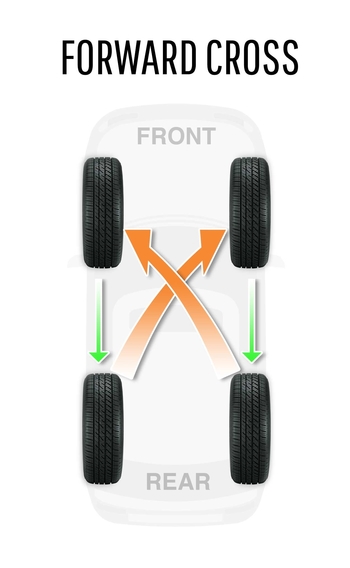
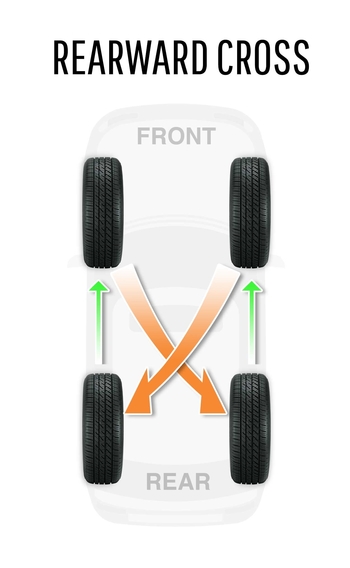
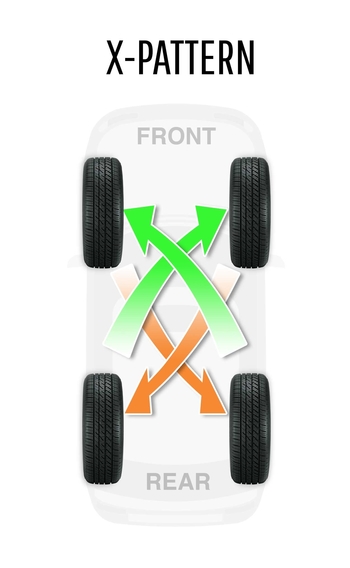
KEEPING THEM ROLLING
With minimal effort you can keep your tires filled to the right pressures and rotated correctly to maximize tire life and keep your car performing at its best. Given how important of a role they play every single time you drive your vehicle, this should be a high priority rather than an afterthought. We hope this article gives you a better understanding of how taking care of your tires can help your safety, happiness and bank account in the long run.


